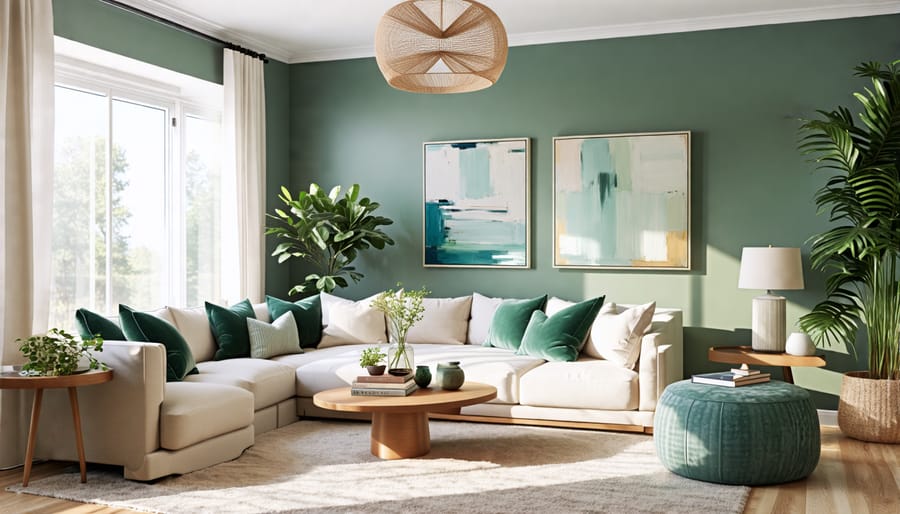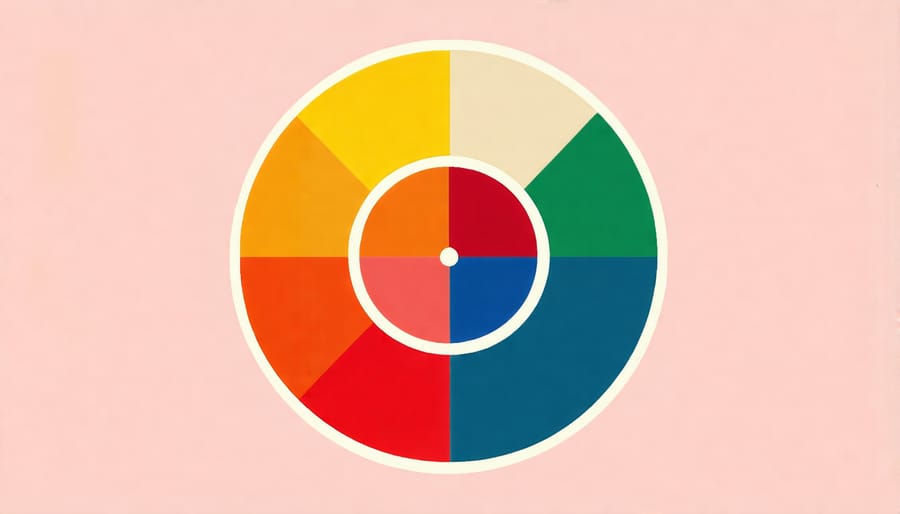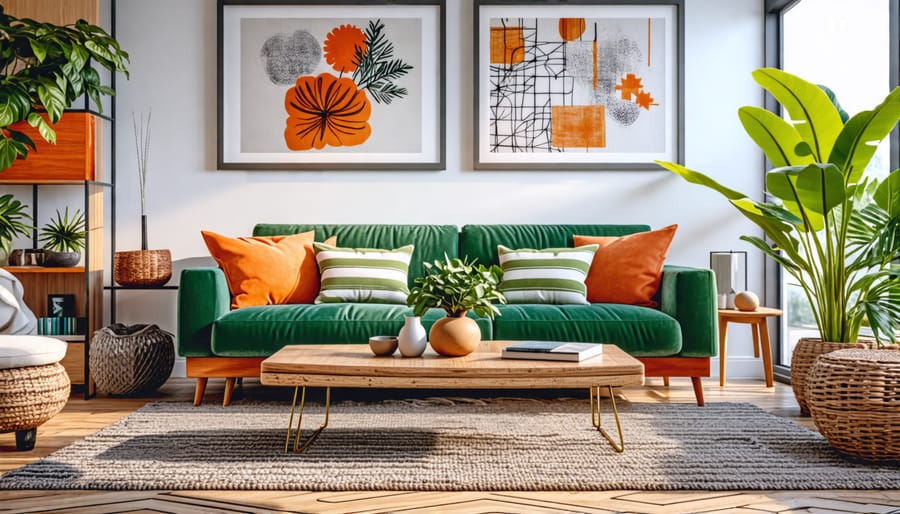
Create a Stunning Home with a Cohesive Color Scheme: Your Ultimate Guide
Choose a foundational color palette by selecting three to five colors that harmonize well together; use tools like color wheels or digital apps for seamless selections. Experiment by painting sample swatches on walls to see how the hues interact with natural and artificial lighting throughout the day. Incorporate accents through DIY projects like custom artwork or painted furniture to enhance your scheme; employ stencils or tape for precision and add unique texture. Leverage technology by using augmented reality apps that visualize color schemes in your home spaces, aiding decision-making before committing to a final design.
Choosing the Right Colors for Your Home
Assessing Your Space
Considering your space is a vital first step toward selecting a cohesive color scheme for your home. Begin by assessing the size of each room. Smaller rooms may benefit from lighter colors that reflect natural light and create a sense of openness, while larger spaces can handle darker, more dramatic hues. Next, evaluate the lighting in every area. Natural sunlight can highlight paint undertones, so rooms with plenty of daylight may appear different from those relying on artificial light. Consider the direction your windows face; north-facing rooms usually have cooler light, which can enhance warmer colors, while south-facing areas enjoy warm, even sunlight.
Don’t forget to think about the mood you want to create. Living rooms often benefit from inviting and comforting colors like warm neutrals, soft greens, or blues. In contrast, a home office might require energizing tones such as muted teal or a sunny yellow to inspire creativity and focus. Whether redecorating a single room or unifying an entire home, aligning the room’s function with your color choice can help set the desired atmosphere. Ultimately, by thoughtfully assessing each room’s size, lighting conditions, and intended mood, you’ll be well on your way to crafting a unified and harmonious color scheme throughout your living spaces.
Color Theory Basics
Color theory is an essential first step in creating a cohesive color scheme that truly transforms your home into a warm, welcoming space. At its core, color theory simplifies how different colors interact with each other. Understanding these basics can empower you to make informed choices, bringing balance and harmony to your interiors. One of the simplest concepts to grasp is complementary colors, which are positioned opposite each other on the color wheel, like blue and orange or red and green. These pairs naturally contrast and can make any room pop. Meanwhile, analogous colors, such as blue, blue-green, and green, sit side-by-side on the wheel and create a soothing, unified look that flows effortlessly from one shade to another. Integrating these principles can be an exciting DIY project, allowing you to refresh your spaces with confidence. For more inspiration and practical ideas, you might explore Cozy Home Decor Ideas and see how you can incorporate these palettes into your own style. Embracing color theory doesn’t require a degree in interior design—just a willingness to experiment and a desire to make your living spaces reflect your personal taste.

DIY Tips for Creating a Cohesive Look
Sample DIY Color Projects
Transforming your home with a cohesive color scheme can be both fun and rewarding, especially when you embark on a few easy DIY projects. Start by giving your walls a fresh coat of paint. Choose a dominant color that reflects the mood you want to set, like serene blues for relaxation or warm yellows for a lively atmosphere. Accent walls can add depth and interest, so consider a coordinating yet contrasting shade for a focal point.
Repurposing old furniture is another fantastic way to boost color harmony. Sand down an old dresser or bookshelf and paint it in a complementary color from your chosen palette. This not only brings the room together visually but also breathes new life into your furniture.
For those who love crafty touches, creating personalized wall art using your color scheme is a fun option. Use canvas panels, painter’s tape, and acrylic paints to craft geometric patterns or abstract art pieces that enhance your home’s style cohesively.
Remember, the goal is to ensure each piece complements the overall look, tying your space together in a refreshing and harmonious way. These simple yet impactful improvements offer a blend of creativity, style, and personal touch to your living environment.

Common Mistakes to Avoid
One common mistake when creating a cohesive color scheme is rushing the process. Homeowners often hastily select colors without considering how they interact in different lighting or across adjoining rooms. To avoid this, gather sample paint chips and view them in various lighting conditions, allowing colors to naturally harmonize with changing daylight and artificial lights.
Another frequent error is ignoring the undertones in paint colors, fabrics, and finishes. These subtle hues can clash and disrupt the intended cohesion. Stay attentive to warm and cool undertones, ensuring they align across your selections for walls, furniture, and decor.
Overcomplicating the palette by adding too many colors is another pitfall. A cohesive look typically uses a simple palette of three to five complementary shades. To avoid a chaotic feel, choose a primary color and surround it with one or two accents, maintaining neutrality in larger spaces or key pieces.
Lastly, neglecting the emotional impact of colors can make your home feel disjointed. Consider the mood you wish to evoke in each space. Whether it’s a calming oasis or a vibrant social area, align your color choices with the desired atmosphere to achieve both cohesion and comfort.
Integrating Technology in Color Design
Useful Apps and Tools
Choosing the right color scheme for your home can often feel overwhelming, but technology makes it simpler than ever. There are several apps designed to help you find and visualize colors seamlessly. One popular tool is the Sherwin-Williams ColorSnap Visualizer, which lets you explore different palettes and even match hues from a photo of your space. This DIY-friendly app is perfect for experimenting with color without any commitment.
Next, consider using the Benjamin Moore Color Portfolio app. It offers augmented reality capabilities, allowing you to see how colors look in real-time on your walls through your smartphone. This is a fantastic way to ensure your selection harmonizes with existing decor. Another great option is the Pantone Studio app, particularly handy for interior designers and homeowners who want professional-grade color inspiration. The app lets you create custom palettes and view them in various arrangements, helping you fine-tune your cohesive color scheme.
Finally, explore Adobe Color, which is available online for free and helps you build palettes based on color theory principles. It’s especially useful for those interested in DIY projects, as it provides a deeper understanding of how different shades work together. By integrating these tools into your design process, you can effortlessly create a beautifully cohesive color scheme for your home.

Conclusion
In conclusion, creating a cohesive color scheme for your home doesn’t have to be daunting. By understanding the basics of color theory and how different shades interact, you can easily transform any space from mundane to magnificent. Whether you’re a homeowner looking to add a personal touch or a DIY enthusiast excited about your next project, planning your color palette with confidence is within reach. Remember, integrating technology, like using color scheme apps, can simplify the process and offer creative inspiration. Moreover, experimenting with DIY approaches, such as painting accent walls or upcycling furniture, allows you to infuse your personality into your design choices. With these practical tips in mind, you’re well-equipped to embark on your interior design journey, armed with the knowledge and tools to make every room reflect your unique style. Start planning today and watch as cohesive colors weave your space into a harmonious haven you’ll love.
